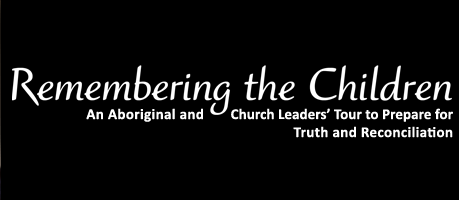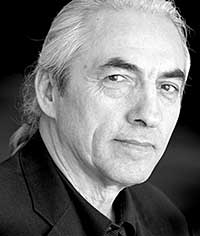

You are here:
National Chief Phil Fontaine
National Chief, Assembly of First Nations

National Chief Phil Fontaine
National Chief Phil Fontaine is a dedicated and highly respected leader in Canada. He has been instrumental in facilitating change and advancement for First Nations people from the time he was first elected to public office as Chief, at the young age of 28. He is a proud member of the Sagkeeng First Nation in Manitoba and still plays an active role in the support of his community.
Phil is the youngest son in an Ojibway family of ten brothers and two sisters. As a child he remembers that he wanted for nothing, as his father and mother were hard working providers for their children. When he was six years old, however, his Father died suddenly. As a result of this tragedy, the family experienced poverty for the first time. But while their home may have lacked electricity, running water and sometimes adequate food, it was still a place of refuge, happiness and love. Agnes Fontaine, Phil’s mother, was a tenacious hardworking women who wasn’t about to let her family fall apart. Known as the best cook in the community, she catered many weddings and other social events to make ends meet when she wasn’t cleaning homes in the nearby community of Pine Falls or taking her family in the bush to pick blueberries while she worked as a cook in logging camps.
The love and respect Phil experienced at home was in sharp contrast to the Indian residential school the Government of Canada forced children like him to attend. He was in the residential school system 10 months out of every year for 10 years. It was at the Fort Alexander Indian Residential School he learned first hand about racism, sexual and physical abuse and the despair of powerlessness that comes with poverty.
These experiences led Phil to take an interest in politics at a young age. He was supported by his mother who taught him many lessons about leadership, hard work and perseverance. In 1952, she became the first Indian woman in Canada to be elected to a band council. She encouraged her youngest son to finish school and attend university.
Phil’s political vision began to take shape while he was a youth activist with the Canadian Indian Youth Council and a member of the Company of Young Canadians. He realized that self determination and the implementation of treaty and land rights were crucial to alleviating poverty for Fist Nations peoples and became an early advocate for these rights. When he became Chief in his own community, he put his thoughts into action by establishing the first Indian controlled education system in Canada; a locally controlled Child & Family Services agency; and the first on-reserve Alcohol and Addictions Treatment Centre in the country.
Having taken these bold steps, it was not long before his leadership abilities began to be recognized beyond his own community.
In the early 1980’s he was elected to the position of Manitoba Regional Chief for the Assembly of First Nations. When his term expired in 1991, he was elected Grand Chief of the Assembly of Manitoba Chiefs where he served for three consecutive terms. In this position, he was instrumental in protecting Aboriginal rights and treaty rights in the Canadian constitution by engineering the defeat of the Meech Lake Accord which would have given special status to Quebec, but not to the First Peoples of Canada. He also negotiated the first comprehensive self government plan for Manitoba First Nations and signed historic employment equity agreements which resulted in thousands of job opportunities for First Nations citizens. In June 2007, he negotiated a fair and just process for the settlement of Specific land claims, drawing on his experience as the Chief Commissioner of the Land Claims Commission, where he served for three years.
In 1997 he stepped onto the national stage where he was elected to the highest elected position in First Nations politics, that of National Chief. He is now serving an unprecedented third term in office. His list accomplishments in this role are legend and continue to grow.
Highlights include his bringing together First Nations from across the continent to sign the Declaration of Kinship and Cooperation of the Indigenous and First Nations of North America. He became the first Indigenous leader to address the Organization of American States, bringing the message of Indigenous peoples to the international stage.
The crowning achievement of his career to date, however, is leading the successful resolution and settlement of claims arising out of the 150 year Indian residential school tragedy. The Final Settlement Agreement now being implemented is the largest, most unique and most comprehensive settlement in Canadian history. Worth over 5.2 billion dollars in individual compensation, the settlement also includes a Truth and Reconciliation Commission, an education fund, healing resources and commemoration funding.
The National Chief, himself a survivor of 10 years of residential school abuses, understood that unless the truth about residential schools was told and fair compensation provided, reconciliation between Canada and the First Nations would be impossible. In this respect his leadership has gone far beyond the First Nations community to the benefit of all Canadians.
National Chief Fontaine has received many awards and honors for his work, including four honorary degrees and membership in the Order of Manitoba.